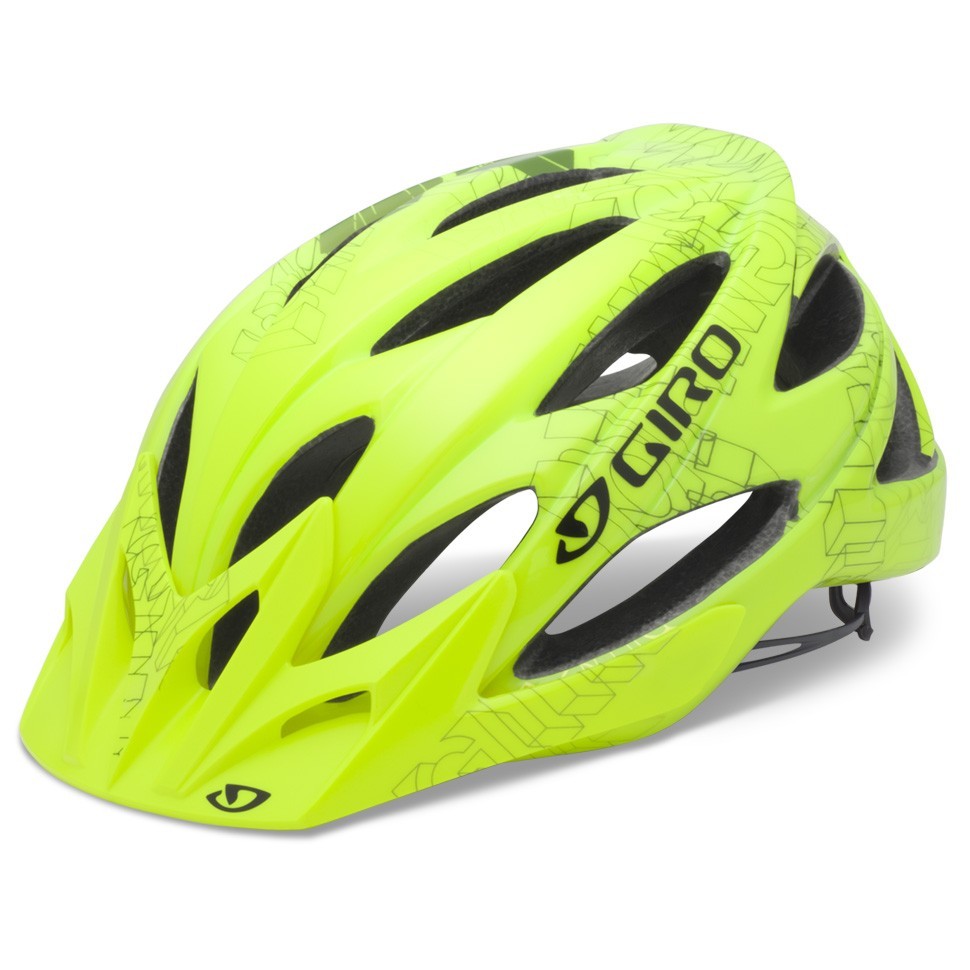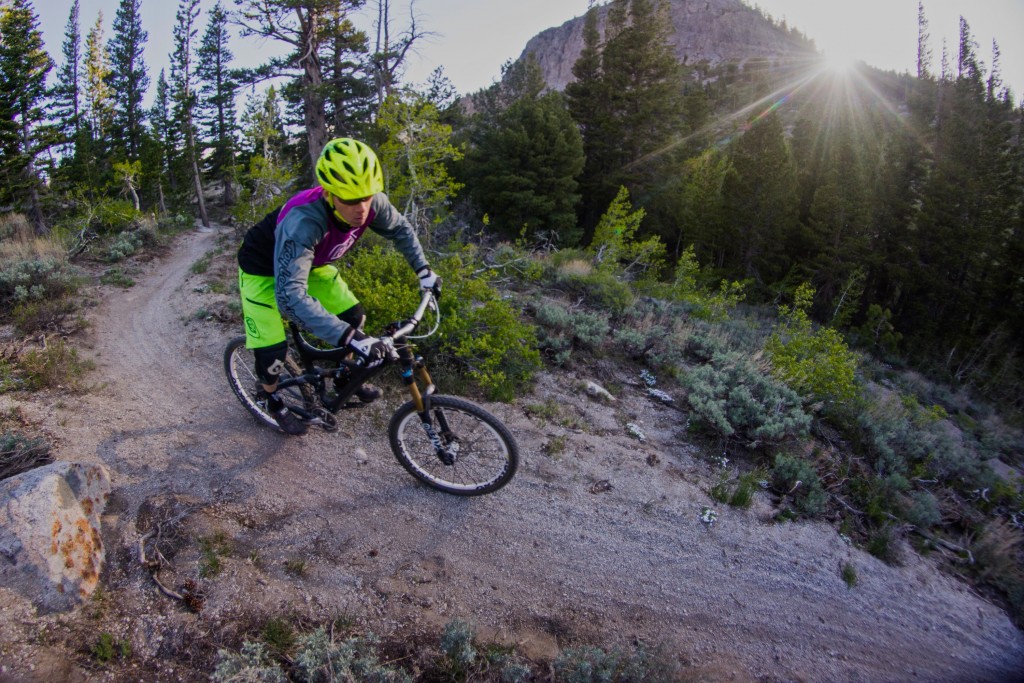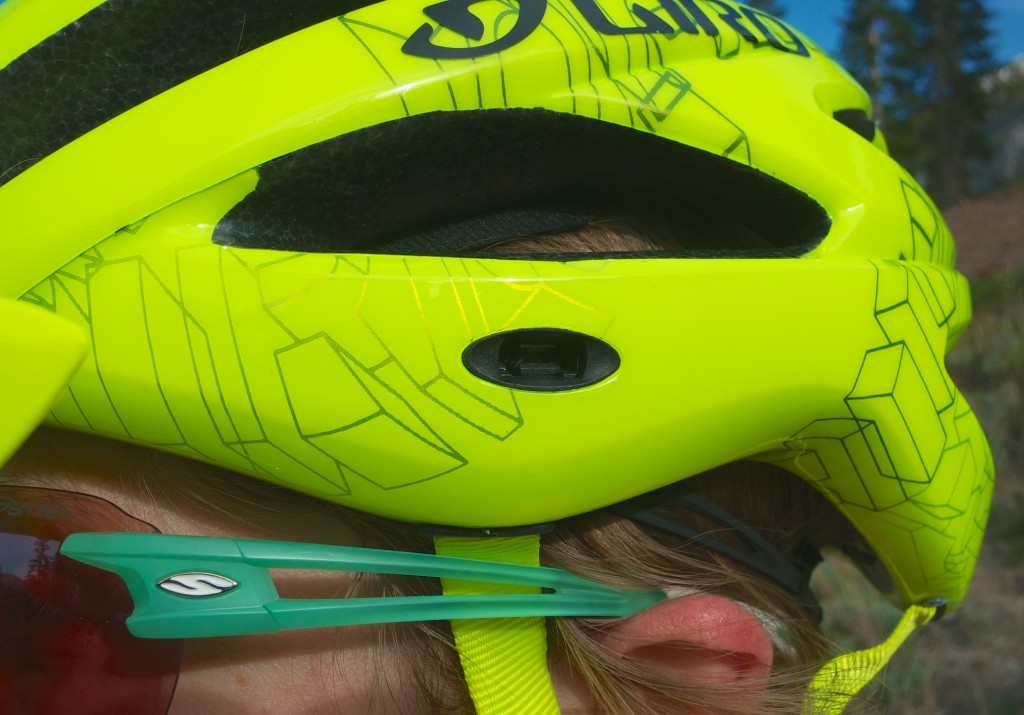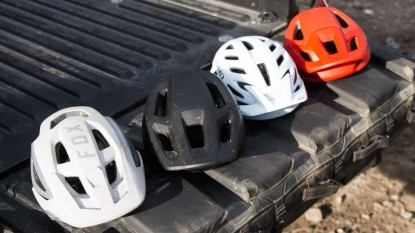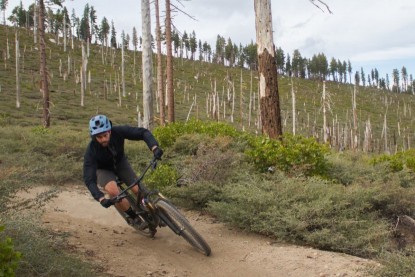The Xar is available in three sizes, and along with our Best Buy Award winner, the Giro Feature, uses Giro's SuperFit sizing system. We found that all of the Giro helmets which use this system fit very similarly. If you own another Giro helmet, including most of their road helmets, it's very likely you will wear the same size in the Xar or Feature.
Retailing for $130, the Xar is one of the more expensive helmets in our test. We think that it is a quality helmet and is worth the money for riders looking cut every gram but who still value safety. If you value saving money over weight, check out either our Best Buy Award winner, the Giro Feature, or the Bell Stoker, both of which weigh just slightly more than the Xar while retailing for considerably less. If you are less concerned about weight and more focused on helmet coverage, check out either the Bell Super or our Editors' Choice, the Troy Lee A1, which both provide considerably more rear and side coverage than the Xar.Giro Xar Review
Our Verdict
Our Analysis and Test Results
The Giro Xar is a very lightweight half shell mountain bike helmet, which is both comfortable and well ventilated. Its visor is small and not as adjustable as many of the other helmets we tested. It has a very trim, yet secure adjustment system which helps keep the weight down.
Performance Comparison
Comfort
The Xar, along with the Giro Feature, received our second highest comfort score. The helmet with the highest comfort score was the Troy Lee A1. The Xar scores high mostly due to its light weight, which makes it much less noticeable on your head. The padding is the perfect thickness to pad the head against the inside of the polystyrene. The padding is covered in X Static material which uses silver fibers and is supposed to suppress the funk. Our test helmet never got nasty, so we think there may be something to this material, which is also used on the liner of the Bell Super. One tiny detail about the padding we wish was different is in the brow area, where there are two interruptions in the padding. While the three piece design at the brow may allow for a tiny bit more airflow, it means that sweat can pour directly down the forehead onto the inside of your sunglasses. We would have preferred a continuous brow band which would provide an uninterrupted defense agains the dreaded sweat drip.
The Roc Loc 5 retention band is free of pressure points or hair pulling.
The Xar works well with almost any sunglasses, including big shield style ones since it has less temporal area coverage. A few of the helmets in our test which sit low on the head and have increased temporal coverage interfered with larger and wider sunglasses. This is somewhat head and face shape dependent, the Xar worked much better with large sunglasses than the Bell Super or Troy Lee A1.
Adjustments
The Xar uses Giro's flagship Roc Loc 5 retention system, which is also found on many of Giro's high end road helmets. This generation of the Roc Loc consists of a very trimmed down band and a small, yet adequately powerful click wheel. In our test we often wore multiple helmets on the same day and sometimes found the wheel a little harder to locate with full finger gloves than with other larger click wheels. We don't think this would be a continued problem for most people who just own one mountain helmet, since you would become more familiar with the size and location of the click wheel. If you already own one of Giro's road helmets, like the Aeon, Atmos or Savant, then the Roc Loc 5 wheel will feel very familiar to you.
The Xar's chin strap can be adjusted fore and aft to accommodate different head and neck shapes. Giro uses locking plastic buckles on the Xar at the yoke/chin strap connection to securely position the tubular webbing. We found the buckles to be quick and easy to open and lock closed. Our testers found that the tubular webbing found on the Xar, as well as on most of the helmets in our test, does not sit quite as flat against the side of the face as flat webbing does. The Giro Feature, as well as our Editors' Choice Award winning Troy Lee A1, use flat webbing which has a tendency to lay flatter and has a sleeker more comfortable feel.
Weight
Not surprisingly, the Xar is the lightest helmet in our review. Along with the excellent ventilation, the Xar's lightness make it the best helmet in our test for cross-country riding and racing.
Our scales measured our size medium test helmet at 11.3 ounces. For comparison, the heaviest helmet we tested was the Bell Super at 14.6 ounces. Other good lightweight options are the Bell Stoker at 11.7 ounces and the Giro Feature at 11.8 ounces. Both of these helmets are just slightly heavier than the Xar while costing considerably less.
Ventilation
The Xar has excellent air flow and took the highest score in our ventilation test. In fact, the Xar ventilates so well, we found it comparable to many of the road biking helmets in our up coming road bike helmet review. Looking solely at the numbers, the Xar does not seem that impressive with just 17 vents. For comparison, the Fox Flux has 20 while the Bell Super has a whopping 25. Ventilation is one area where the numbers do lie. Our testers have found that the number of vents in no way reflects the percentage of open space a helmet has or the way cool air flows into and hot air flows out of a helmet. The Xar's vents are large, long, and run the length of the helmet, providing the best cooling airflow of all the mountain bike helmets we tested. This is the helmet you want if you run hot or often ride in stifling conditions.
Features
The Xar has a very small visor which doesn't block much sun. This visor is held in place by two horizontal tabs at either side of the front of the helmet, which allow for a small amount of up/down adjustment. Similar to the visor found on the Bell Stoker, the visor relies on the friction of the visor against the front of the helmet to stay in place. Our test Xar visor seemed to work better than the Stoker visor, though the mechanism is exactly the same. If you are looking for the ultimate visor, consider either the Troy Lee A1 or the Bell Super, which both have massive visors that adjust via more consistent mechanisms.
The Xar's large number of vents make it easy to attach most helmet mounted bike lights with velcro straps or zip ties. We doubt Giro intended this to be a feature of the Xar, but it is something to consider if you slay trails by both day and night.
Durability
The Xar held up really well to everyday wear and tear during our test. One key component of everyday durability in a half shell helmet is wether or not the lower edge of foam is covered by the polycarbonate shell. The Xar's shell wraps completely around the polystyrene foam, protecting it from dings and dents when the helmet is rolling around in the back of your vehicle. Most of the helmets we tested which retail for over $100 have a shell which completely covers the lower edge of the foam. The only one which does not is the Bell Super, which leaves the foam exposed.
One area of slight concern in terms of the Xar's durability is the Roc Loc 5 retention system, which is very thin and could be prone to damage. Our Rock Loc survived our test unscathed, but it is certainly the flimsiest retention band of the helmets we tested. This retention system is much more similar in robustness to the bands found on helmets in our road bike helmet review. In fact, the Rock Loc 5 is also found on many of Giro's high end road helmets.
Best Applications
Due to its light weight and excellent ventilaiton, this helmet excels at cross country riding and racing, and can also be a good choice for someone who only wants one helmet for road bike riding and mountain biking. This was also our favorite for cranking uphill in hot weather.
Value
The Xar is one of the most expensive helmets we tested. It may be worth it for gram counting cross-country racers, but the Stoker and Feature are just slightly heavier and both provide more coverage at a lower cost.
Conclusion
The Xar is an excellent helmet for the gram counting crowd as it is the lightest helmet in our test. It is also the best ventilated helmet we found, which makes it a good option for riding in super hot conditions. It has less coverage than some of the new Enduro oriented helmets we tested, but still provides more coverage than old school half shell designs.


